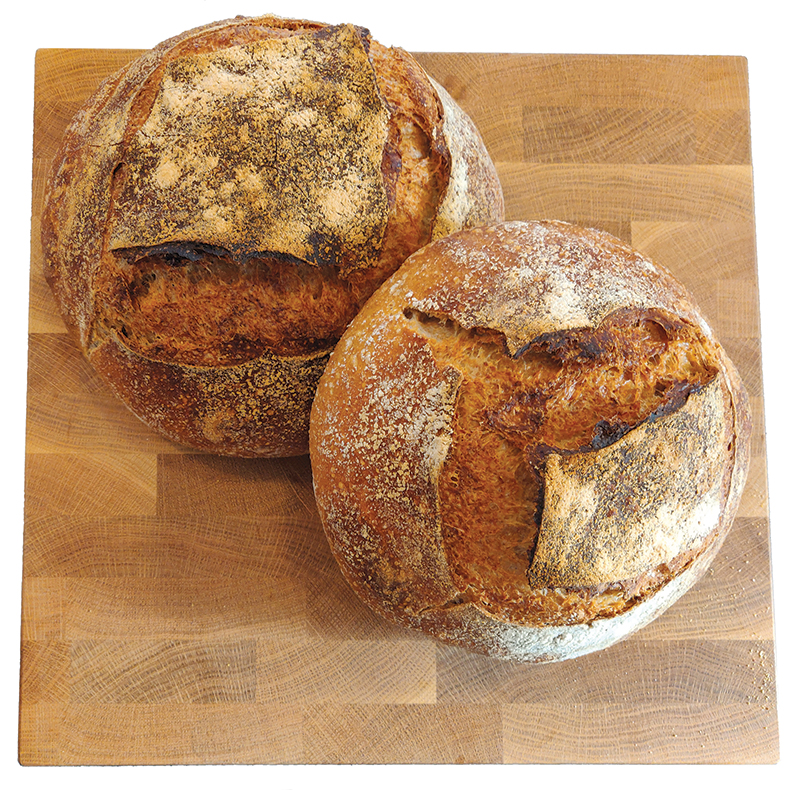Hand traces
Un texte de Sharon Kivenko
Paru dans le numéro Été/Summer 2024
Publié le : 4 juin 2024
Dernière mise à jour : 4 juin 2024
The potter and bread baker leave their unique hand traces on their creations as do the trades whose skills we rely upon to make our homes.
I love to bake bread. On Mondays I feed the sourdough starter or levain for a crusty country loaf for our mid-week meals. On Fridays, I braid the challah – the ubiquitous Jewish “tear and share” bread meant for our Sabbath meals, when we pause to reflect on the week past and recharge for the week ahead. Over the past several years of regular baking, I have come to learn, as most bread bakers do, that daily dough requires attentiveness and care; a keen sense of temperature, hydration, fragrance, and a confident hand to knead the dough, shape it and get it in the oven just so. Honing these senses while establishing a regular practice of making bread has offered me a surprising kind of refuge and respite. Making bread grounds me when I am feeling unmoored and makes me feel productive when I am otherwise at a loss. My recipes make enough for two loaves and I relish those moments when I can give one of the pair to friends or acquaintances, many of whom are gleefully ready to tuck right in.
In his well-known bread book Tartine, lauded American baker, Chad Robertson, talks about how the “soul of bread baking” is in the art of cultivating the levain. “A baker’s true skill lies in the way he or she manages fermentation,” and this managing is all about feeding the wild yeasts – the microflora – that live in the air and on the hands of the baker. The dough is expertly mixed and shaped with these hands – steady, knowing palms and fingers, savvily marking the final round, sealed by the heat of a hot steam-filled oven. Similarly with pottery: potters hands imprint their work, leaving traces of themselves to be encountered by whomever holds their creation. What unfolds is a special kind of intimacy, one that manifests itself through asynchronous touch.
For the past fifteen months, my husband and I have been managing the building of our “forever home”. Throughout this time, I have centered my energies and excitement on creating spaces where my family would gather; where I would feed my partner and my children and, yes, where I would bake bread. Over the months, as the kitchen took shape beyond the designer’s drafts, I would steal moments on the construction site to quietly envision the meals and the breads around which family and friends would come together. One such moment happened while the carpenter building our kitchen was inside his own detailed process of installation. As I dipped into my own reverie, I noticed him working through his calculations, studying each piece of wood, each casing. I was struck by the notion that here was this expert craftsperson with knowledge of wood and a visceral understanding of physics and engineering, putting his energies and the tactile skills of his hands into his work; into the space that would become the heart-centre of my family’s home. Like the hands of the potter and the bread baker who leave their unique hand traces on their creations, so, too, do the trades whose skills we relied upon to make real this home, once imagined.
We moved into our house, now complete, on Christmas Eve. I baked breads as gifts; loaves holding my hand traces as tokens of gratitude to those who marked our home with theirs. And today, I am keenly aware of how the odors of fresh paint and wood stain are quickly giving way to the sweet perfume of levain and the toasty aromas of freshly baked bread.
Sharon Kivenko

